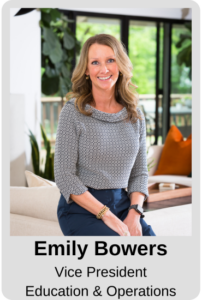19 Feb Thought Leadership: A Blended Generational Approach to Staffing

The perfect mix of ingredients is essential crafting delicious baked goods. If you just throw a few ingredients into a bowl then dump them into a pan to bake without mixing, you could have a less than successful result. It’s the mixing that turns raw ingredients into a snacking delight.
The same is true when managing a variety of generations in the workplace. As Gen Z enters the work force, more and more companies find themselves trying to best utilize the skills and meet the expectations of each generation.
Too often, articles or social media posts focus on how the generations are at odds with each other, but smart companies know that just like when baking, mixing is the key. Companies stand to benefit a great deal from the different perspectives each generation brings to the table, and the more you can mix up the generations in your workplace, the more your company will thrive.
At BEMA, our theme for first quarter is “renew,” and I started thinking about what the word renew means in terms of managing employees. It’s easy to fall into the trap of thinking that renewal in the workplace comes from simply adding the younger generation. And there is truth there. The emerging workforce brings energy and new ideas; however, we don’t want to miss out on equally fruitful opportunities to experience the renewal that comes with a blended generational approach to staffing.
I recently read an article from SHRM that focused on how Baby Boomers are coming back to work after retirement – or simply pushing off retirement – as they still want to be active members of the workforce. Aging generations have as much to offer in the workplace as the younger ones, and if we want to create truly active, accepting, and vibrant workplaces, then we need to recognize what each generation brings to the table and how they can work together to build stronger teams, create modern processes and create an effective system of knowledge management.
Seasoned workers are essential
The workforce itself is aging and with many Baby Boomers retiring, the number of available workers is shrinking while the number of jobs is growing. With 8.3 million jobs expected to be added between 2021 and 2031, companies are going to need older workers to fill some of those positions. In fact, by 2030, 150 million jobs worldwide will be held by people over the age of 55.
As this workplace transformation is happening, the first generation of “digital natives” is entering the workforce. How Gen Z sees and interacts with the world is vastly different than the way Boomers and Gen X do. Companies that lack a strong philosophy and vision on creating an age-diverse workforce will miss out on the unique strengths of each generation.
Recruit older workers
Let’s start with those Baby Boomers. Many of that generation are retiring, but a large number want to stay connected to their careers in some way. Whether that’s working full time or taking on a flexible, part-time or mentoring role, Baby Boomers still have plenty to offer.
Boomers may not be as digitally savvy as their younger counterparts, but they carry a wealth of experience and well-honed soft skills learned over a lifetime of work. Their contributions can be invaluable in avoiding mistakes and helping younger workers learn intangible relationship-building skills.
The SHRM article stated, “When experienced leaders retire all at once, it can leave the generation behind them unprepared to fill their roles.” To avoid this knowledge drain, consider actively recruiting older workers to help mentor younger employees. This transfer of knowledge helps younger workers grow into their future roles while still being able to ask questions and gain insight from older workers who have already done the job.
![]()
Shake up your teams
If you look around your company and see that most of your teams are made up of a single generation, it may be time to mix it up a bit. Inter-generational teams bring the excitement and energy of youth mixed with the experience and institutional knowledge older workers bring to the table.
Be intentional when building teams and take into account what each individual employee brings to the table, including their experiences and preferred working style. While everyone has their own unique way of working, we can make some generalities about how each generation prefers to work. For example, Baby Boomers often prefer in-person conversations while Gen Z would rather communicate via text or other digital communication. Gen Xers are often more independent workers while Millennials are known for their preference for authenticity.
When you create an environment at your company where every generation feels welcome and valued, employees thrive and teams succeed.
![]()
Understand what each generation values
One key to creating a renewed work environment that values every employee, no matter their age is understanding how to attract the best talent. That may mean highlighting different facets of your company during the recruiting process to best match what each generation finds important. Research from ADP can be helpful in figuring out what most motivates workers from each generation. In general, older workers place more value on compensation while younger workers are more interested in social responsibility, flexibility, and the opportunity for career growth. Interestingly, Gen Z employees are the least interested in employee recognition, preferring a flexible work environment to accolades.
Understanding the benefits that each generation brings to the workplace and deliberately recruiting workers with the idea of creating an environment where their work habits and knowledge mix freely can help your company become a place full of renewed, vibrant ideas that attracts the best employees – no matter their age.





Daniel Florencio
Posted at 11:44h, 23 FebruaryReally appreciate this insight. The other day I was in a meeting with four executives, one boomer, one gen xer, one gen z, and myself the millenial. Four different approaches and expectations looking for one single solution. Savvy leadership knows how to draw the best from each and find complementarity among skillsets!